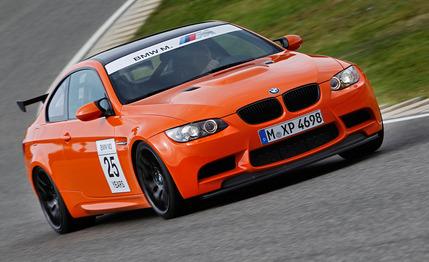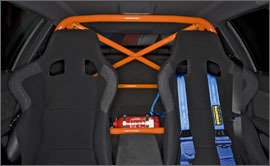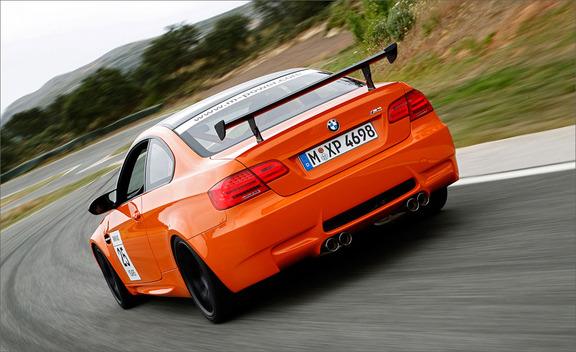
 First Drive Review
First Drive Review
With the launch of the E92 BMW M3 now almost three years behind us, we’ve resorted to testing tuner and racing versions of the car for our M3 fix. Thankfully, BMW is introducing a lighter, more powerful version for 2011, so we had an excuse once again to slide behind the wheel. Awesome side note: BMW M GmbH chief Kay Segler says the internal code name for the M3 GTS was Jägermeister, a reference to the famous German digestif and frat fuel with a history of sponsoring motorsports.
Segler and crew came about the weight loss the easy way: They removed stuff. There are no rear seats, the center console and the door trim have shed a few pounds, and even air conditioning is optional. The back window and the rear side glass have been replaced with polycarbonate (the front windows and the windshield remain glass). The M3's audio system was discarded, and so was a lot of sound insulation. The only music comes from the ultralight titanium exhaust system.
Weight loss is less than what we had expected—just over 100 pounds. Considering that’s partly because the standard roll bar and the fire extinguisher eat up some of the savings, though, we’re okay with it. Although three-point seatbelts come installed in the car, six-point harnesses are included as well.


Power rises from 414 hp to 444, arriving at the same 8300 rpm as in the regular M3. Maximum torque rises from 295 lb-ft at 3900 rpm to 325 lb-ft at 3750 rpm. It wasn’t easy, though: M had to bore the engine from 4.0 to 4.4 liters, a lot of effort to gain 30 hp and 30 lb-ft.
Even More M3-ness
From behind the wheel, the trifecta of less weight, more power, and forceful aural feedback is glorious. Predicted 0-to-60-mph times drop from 4.6 seconds to 4.4—we’ve seen a base M3 run to 60 in as few as 4.1 seconds, so expect the real-world figure to dip into the threes—and top speed rises from a governed 155 mph to 190. The engine is supremely responsive and much louder than a regular M3’s, singing a darker, menacing song. Although you can get the regular M3 with a manual gearbox, the M3 GTS only comes with a seven-speed dual-clutch transmission.
Any M3 feels lighter the harder it is pushed, and the GTS only enhances the sensation. The front and rear track have been widened, and this car wears 19-inch wheels with 255 front and 285 rear rubber. Like the base car, it is easy to control, with a stability-control system that kicks in a bit too early but can be turned off. Power-on oversteer can be induced easily, and we like the steering: nicely weighted, direct, and precise. This is an easy car to drive extremely fast.
The hand-built M3 GTS costs about twice as much as a regular M3, but before you start complaining, be informed that the entire production of "up to 150," as M says somewhat cryptically, is sold out. None of them will come to the U.S., at least not officially; BMW didn't want to go through the trouble of official certification.
Those who made it on the list had better like the glaring orange used by Jägermeister racing teams—the GTS doesn't come in any other color. With all the cars sold already, that obviously wasn’t a problem.

